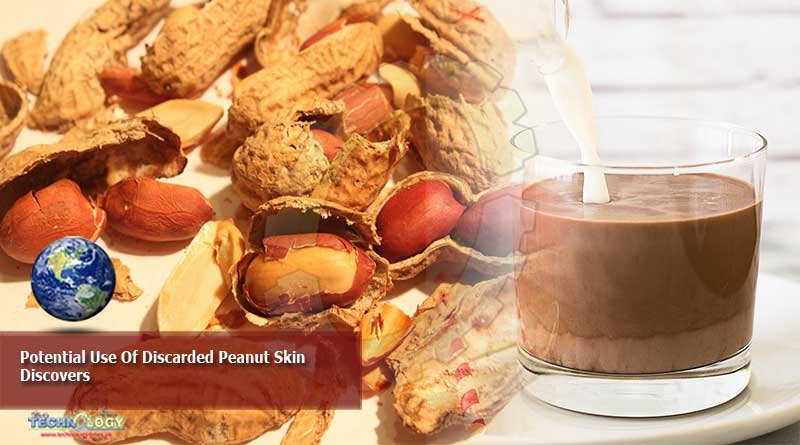American Chemical Society research shows potential use for discarded peanut skin.

Adding waste peanut skin to milk chocolate boosts its antioxidant properties, according to new research from the American Chemical Society.
“The idea for this project began with testing different types of agricultural waste for bioactivity, particularly peanut skin,” says Lisa Dean, Ph.D., the project’s principal investigator. “Our initial goal was to extract phenolics from the skins and find a way to mix them with food.”
When manufacturers roast and process peanuts to make peanut butter, candy and other products, they toss aside the papery red skins that encase the legume inside its shell. Thousands of tons of peanut skins are discarded each year, but since they contain 15 percent phenolic compounds by weight, they’re a potential goldmine of antioxidant bioactivity. Not only do antioxidants provide anti-inflammatory health benefits, they also help keep food products from spoiling.
“Phenolics are very bitter, so we had to find some way to mitigate that sensation,” Dean says. “In fact, the natural presence of phenolic compounds is what gives dark chocolate its bitterness, along with less fat and sugar compared to its cousin milk chocolate. Dark varieties are also more expensive than milk ones because of their higher cocoa content, so the addition of a waste like peanut skin provides similar benefits for a fraction of the price.”
The researchers also are exploring the extraction and incorporation of phenolic compounds from used coffee grounds, discarded tea leaves and other food scraps.
To create their antioxidant-boosted milk chocolate, Dean and her team of researchers at the U.S. Department of Agriculture’s (USDA) Agricultural Research Service worked with peanut companies to obtain the peanut skins. From there, they ground the skins into a powder, and extracted the phenolic compounds with 70 percent ethanol. The lignin and cellulose left behind can be used in animal feed as roughage.
They also worked with local coffee roasters and tea producers to obtain used coffee grounds and tea leaves, using a similar methodology to extract the antioxidants from those materials. The phenolic powder is then combined with maltodextrin, a common food additive, to make it easier to incorporate into the final milk chocolate product.
To make sure their new confection would pass gastronomic muster, the researchers created individual squares of chocolate with concentrations of phenolics ranging from 0.1 percent to 8.1 percent and had a trained sensory panel taste each one. The goal was to have the phenolic powder be undetectable in the flavor of the milk chocolate.
The taste-testers found that concentrations over 0.9 percent were detectable, but incorporating the phenolics at 0.8 percent resulted in a good compromise of a high level of bioactivity without sacrificing flavor or texture. In fact, more than half of the taste testers preferred the 0.8 percent phenolic milk chocolate over the undosed control milk chocolate. This sample had higher chemical antioxidant activity than most dark chocolates.
Peanut allergy concerns could complicate practical use
While these results are very promising, Dean and the team also acknowledge that peanuts are a major food allergy concern. They tested the phenolic powder made from the skins for presence of allergens, and while none were detected, they say that a product containing peanut skins should still be labeled as containing peanuts.
Next, the researchers plan to further explore the use of peanut skins, coffee grounds and other waste products into additional foods. In particular, Dean is hoping to test whether the antioxidants in peanut skins extend the shelf life of nut butters, which can go rancid quickly because of their high fat content.
While commercial availability of their boosted chocolate is still a ways off and subject to corporate patents, they hope that their efforts will eventually lead to a better milk chocolate on supermarket shelves.
The researchers acknowledge support and funding from the USDA Agricultural Research Service.
The researchers will present their results today at the American Chemical Society (ACS) Fall 2020 Virtual Meeting & Expo. ACS is holding the meeting through Thursday. It features more than 6,000 presentations on a wide range of science topics.
The American Chemical Society (ACS) is a nonprofit organization chartered by the U.S. Congress. ACS’ mission is to advance the broader chemistry enterprise and its practitioners for the benefit of Earth and its people.
the article is originally published at candy industry.
